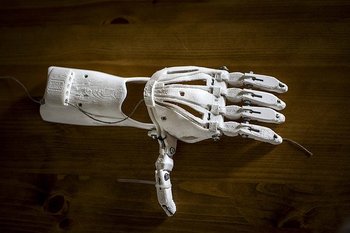Resin 3D printing has come a long way since its humble beginnings. What started out as a tedious, expensive process was quickly perfected and made more accessible to the masses.

Today, resin 3D printers are incredible tools that can be used to create intricate designs and objects with astonishing detail. From jewelry to prosthetics and everything in between, there’s virtually no limit to what you can create with a resin 3D printer.
Today, resin 3D printers are incredible tools that can be used to create intricate designs and objects with astonishing detail.
When it comes to 3D printing technology, there is always something new on the horizon. But one type of 3D printer that has been around for a while now is resin 3D printers.
These handy machines are capable of creating some incredible designs and objects with astonishing detail. In the early days of resin 3D printing, the process was far from perfect.
The prints were often inaccurate and full of defects. But as time went on and technology improved, so did resin 3D printers. 50% Off for HALOT-LITE Resin 3D Printer.
There is virtually no limit to what you can create with a resin 3D printer.
They can be used for everything from jewelry to prosthetics. And the best part is that they continue to evolve, becoming more and more versatile with each passing year.
It wasn’t that long ago when 3D printing was nothing more than a pipe dream. But now, thanks to advances in technology, anyone can own a resin 3D printer and use it to create just about anything they can imagine.
Let’s talk about the history of resin 3D printing and how it has evolved over time.
Resin 3D printing is a process that uses a liquid photopolymer resin to create three-dimensional objects. The resin is cured by a laser or other light source, which hardens it in layers. This process allows for the creation of complex objects with high levels of detail.
The first resin 3D printer was invented in 1984 by Charles Hull. Hull called his invention stereolithography (SLA), and it was the first commercially available 3D printing technology.
SLA was originally used for rapid prototyping, but it has since been adopted for a variety of other applications, including jewelry making, dental restorations, and medical implants.
In the early days of resin 3D printing, the technology was expensive and time-consuming. However, the cost of resin 3D printers has come down significantly in recent years, and the process has become much faster. This has made resin 3D printing more accessible to a wider range of users.
As resin 3D printing technology has evolved, so have the materials that can be used. In the early days, only a limited number of resins were available.
However, today there are a wide variety of resins available, each with its own unique properties. This allows users to choose the resin that is best suited for their specific application.
The evolution of resin 3D printing has made it a powerful tool for a variety of industries. The technology is now used to create everything from prototypes to medical devices.
As the technology continues to evolve, it is likely that resin 3D printing will become even more widely used in the future.
Here are some of the key milestones in the evolution of resin 3D printing:
- 1984: Charles Hull invents stereolithography (SLA).
- 1987: 3D Systems releases the SLA-1, the first commercially available SLA 3D printer.
- 1990: EnvisionTEC develops the first digital light processing (DLP) 3D printer.
- 2005: Formlabs releases the Form 1, the first desktop SLA 3D printer.
- 2014: Anycubic releases the Photon, the first low-cost DLP 3D printer.
- 2017: Elegoo releases the Mars, a popular budget-friendly resin 3D printer.
- 2020: Phrozen releases the Sonic Mighty 4K, a high-resolution resin 3D printer.
Here are some of the benefits of resin 3D printing:
- High level of detail
- Ability to create complex objects
- Wide variety of materials available
- Affordable and accessible
Here are some of the challenges of resin 3D printing:
- Odor
- Toxic fumes
- Post-processing required
- Limited build volume
Despite the challenges, resin 3D printing is a powerful technology with a wide range of applications.
As the technology continues to evolve, it is likely that resin 3D printing will become even more widely used in the future.
Here are some of the future trends in resin 3D printing:
- Increased use of biocompatible resins for medical applications
- Development of new materials with enhanced properties
- Expansion into new markets, such as automotive and aerospace
- Development of new 3D printing processes that are faster and more efficient
Save $100 for LD-002H Resin 3D Printer
The future of resin 3D printing is bright. Technology has the potential to revolutionize a wide range of industries.
Buy a printer, and get free gifts.
As the technology continues to evolve, it is likely that resin 3D printing will become even more widely used in the years to come.
Thanks,
Bullwinkle


